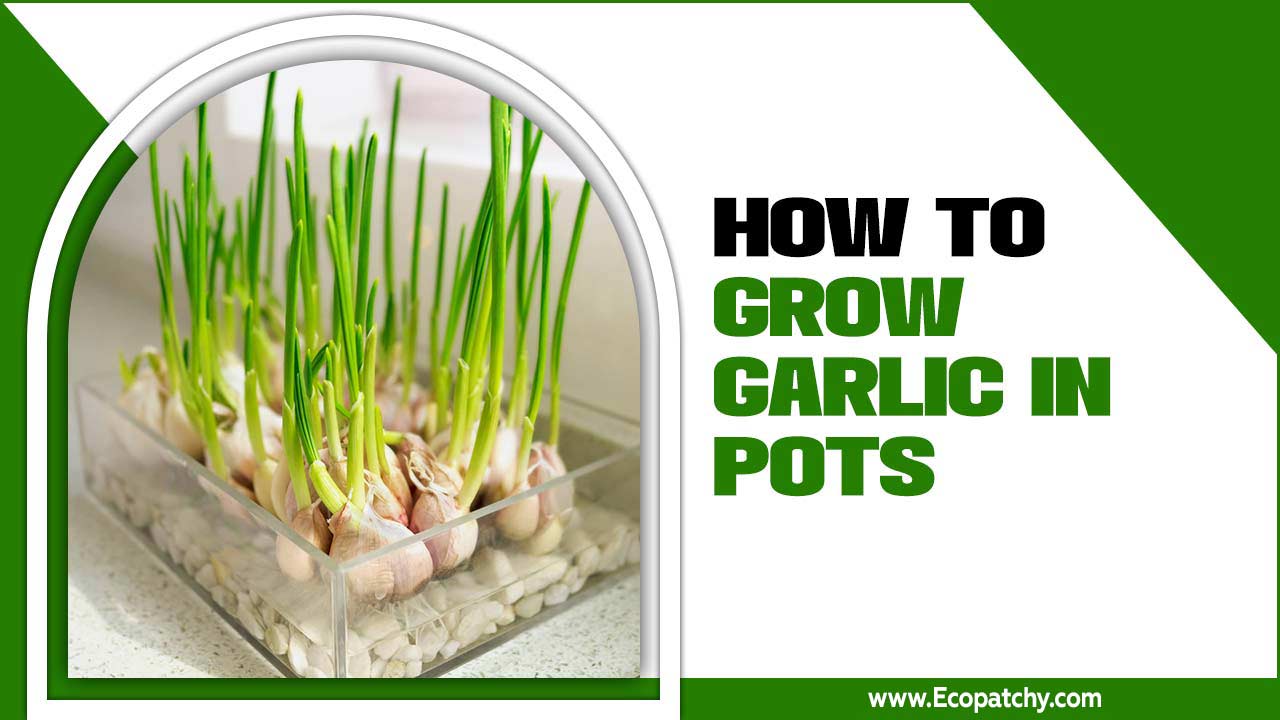Pansies are beautiful and colorful flowers that can brighten up any garden or balcony. However, taking care of them can be a bit challenging if you are not familiar with their needs.
Here, we will guide you through the ins and outs of pansy care. From understanding their basic requirements to detailed information on soil preparation, planting, watering, fertilizing, pruning, and pest management. We will also provide tips on how to extend the blooming season and overwinter your pansies successfully.
Additionally, we will give you creative ideas on how to care for pansies in your landscaping projects. By the end of this post, you will have all the knowledge you need to grow healthy and vibrant pansies that will be the envy of your neighbors!
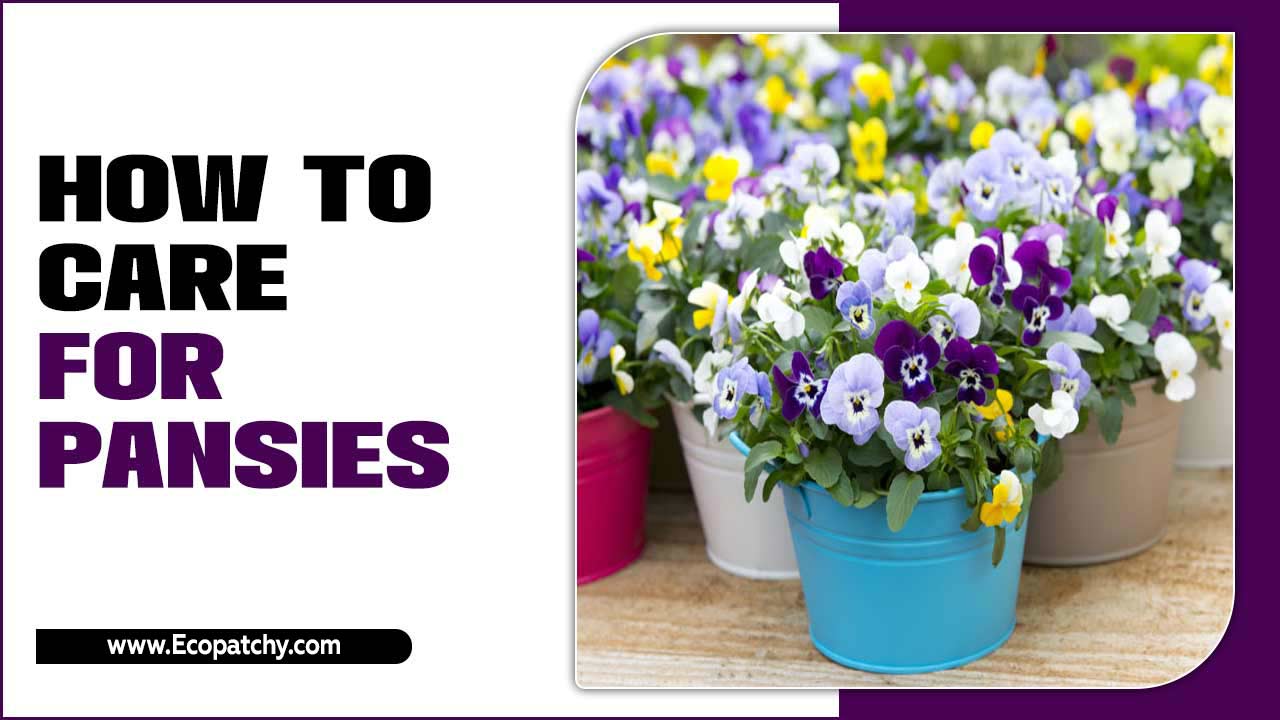
About Pansies
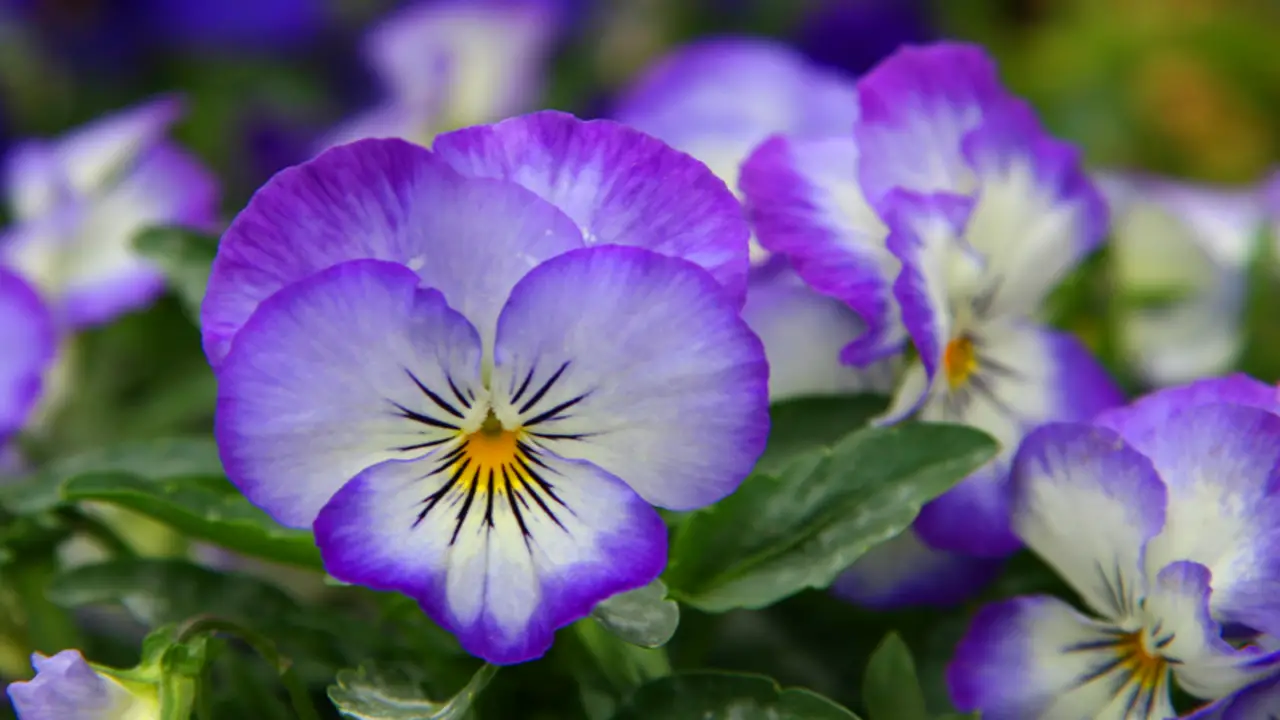
Pansies are a popular choice for gardeners due to their vibrant colors and ability to bloom during cooler months. These delicate flowers are known for their heart-shaped petals and distinct “face” markings, which add charm and personality to any garden or container.
Pansies come in various colors, including shades of purple, yellow, orange, and white, allowing for endless combinations and creative displays. They prefer well-drained soil and can tolerate both full sun and partial shade, making them versatile and adaptable to different growing conditions. With proper care, pansies can thrive and bring beauty to your garden yearly.
Understanding The Needs Of Pansies
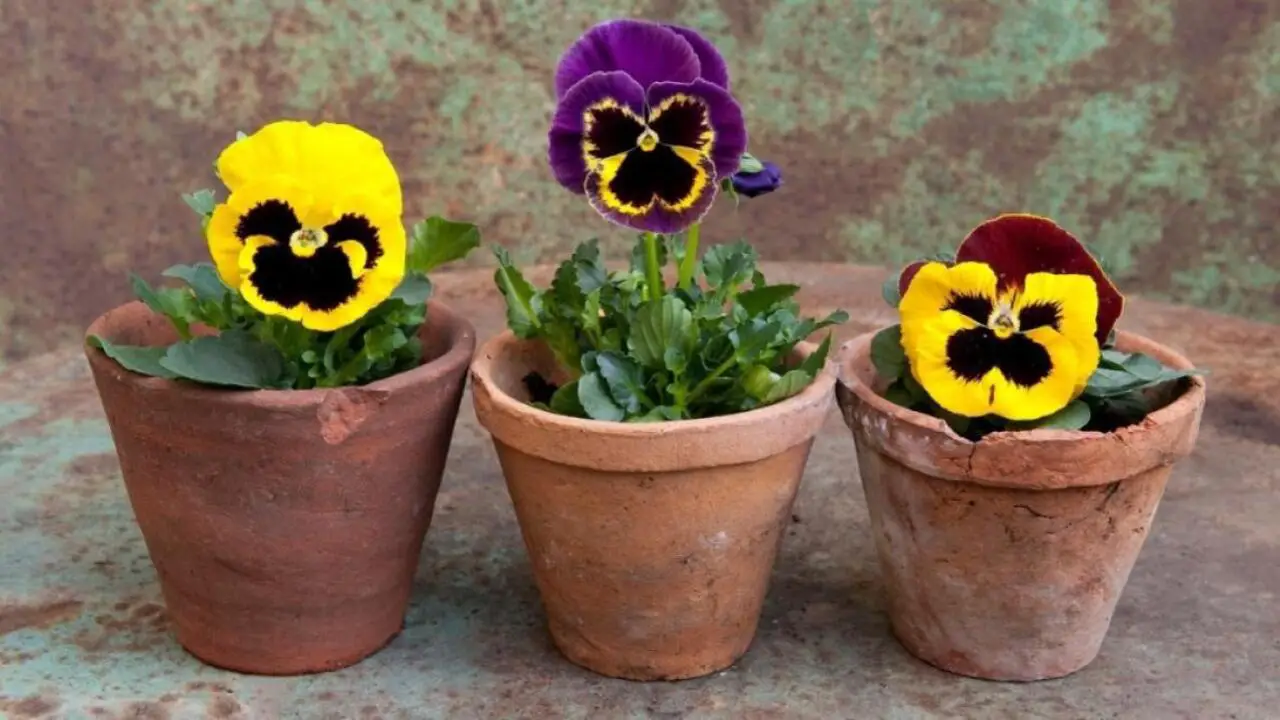
Caring for pansies involves understanding their specific needs. Pansies thrive in cool weather and prefer well-drained soil rich in organic matter. They also require regular watering to keep the soil moist, not waterlogged. It is important to avoid overwatering or allowing the soil to dry out completely.
Pansies benefit from regular fertilization with a balanced fertilizer to promote healthy growth and abundant blooms. Deadheading faded flowers can help prolong blooming and keep the plants looking tidy.
Additionally, it is important to monitor for pests such as aphids or slugs, which can damage pansy plants. You can enjoy vibrant and beautiful pansies throughout the growing season by providing the right conditions and care.
How To Care For Pansies: Detail Answer
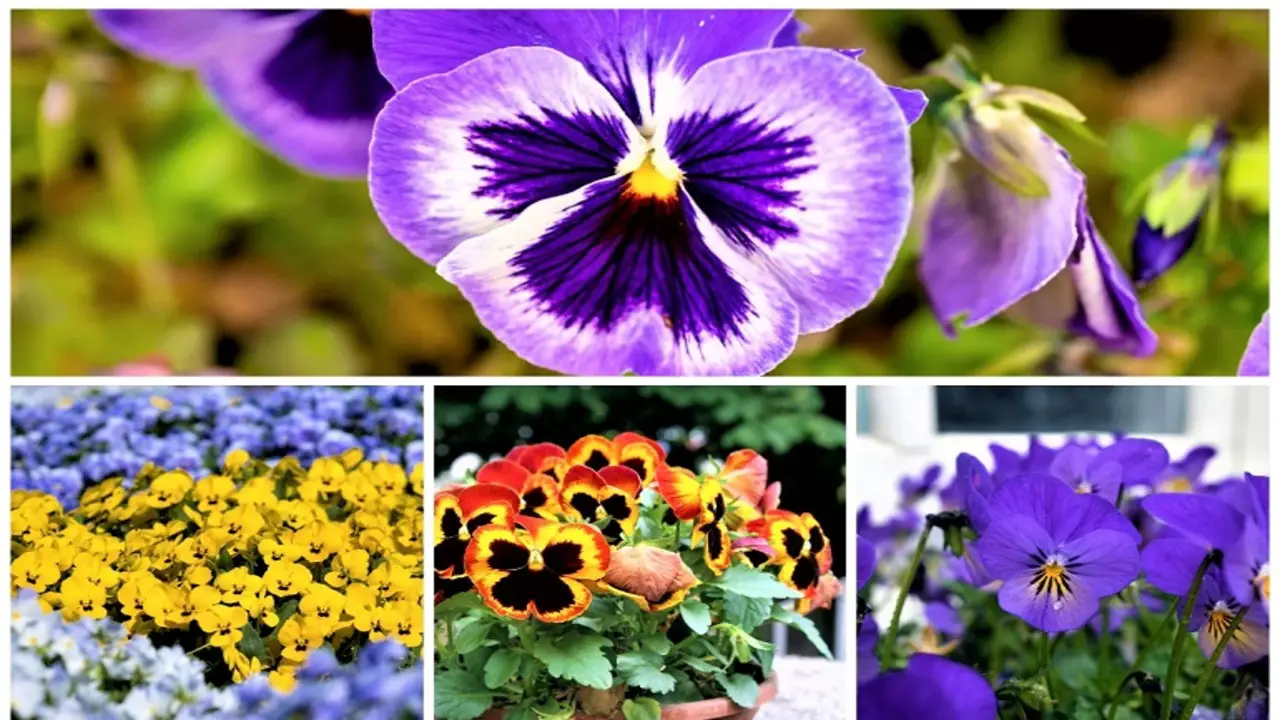
Pansies, known for their vibrant colors and delicate blooms, are a popular choice for garden enthusiasts looking to add a touch of beauty to their outdoor spaces. To ensure the health and longevity of these stunning flowers, proper care and attention are essential. Here we will discuss how to care for pansies.
Choosing The Right Location For Pansies
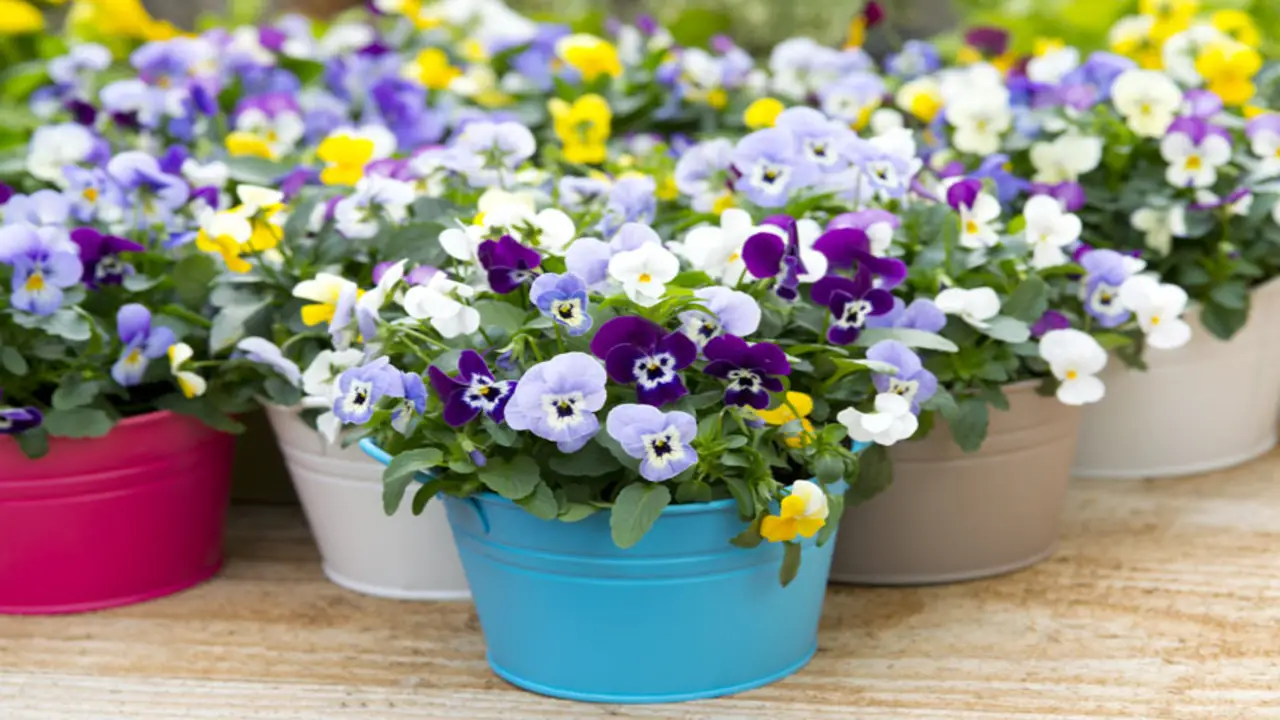
Choosing the right location for pansies is crucial to their health and well-being. Considering these factors, you can create an optimal growing environment for your pansy plants and ensure they thrive throughout the season. Here are a few key factors to consider when selecting a spot for your pansy plants:
- Sunlight: Pansies thrive in cooler temperatures, so choosing a location that receives partial shade or full sun is important. Avoid placing them in areas that receive intense afternoon sunlight, which can cause the flowers to wilt and fade.
- Soil Conditions: Pansies prefer well-draining soil that is rich in organic matter. Before planting, amend the soil with compost or peat moss to improve its texture and fertility.
- Temperature: Pansies are cold-tolerant, but they can be sensitive to extreme heat. In warmer climates, it’s best to plant pansies in early spring or late fall when temperatures are milder.
- Watering: Pansies have shallow roots, so they require regular watering to keep the soil evenly moist. However, be careful not to overwater, as this can lead to root rot and other fungal diseases.
Soil Preparation For Pansies
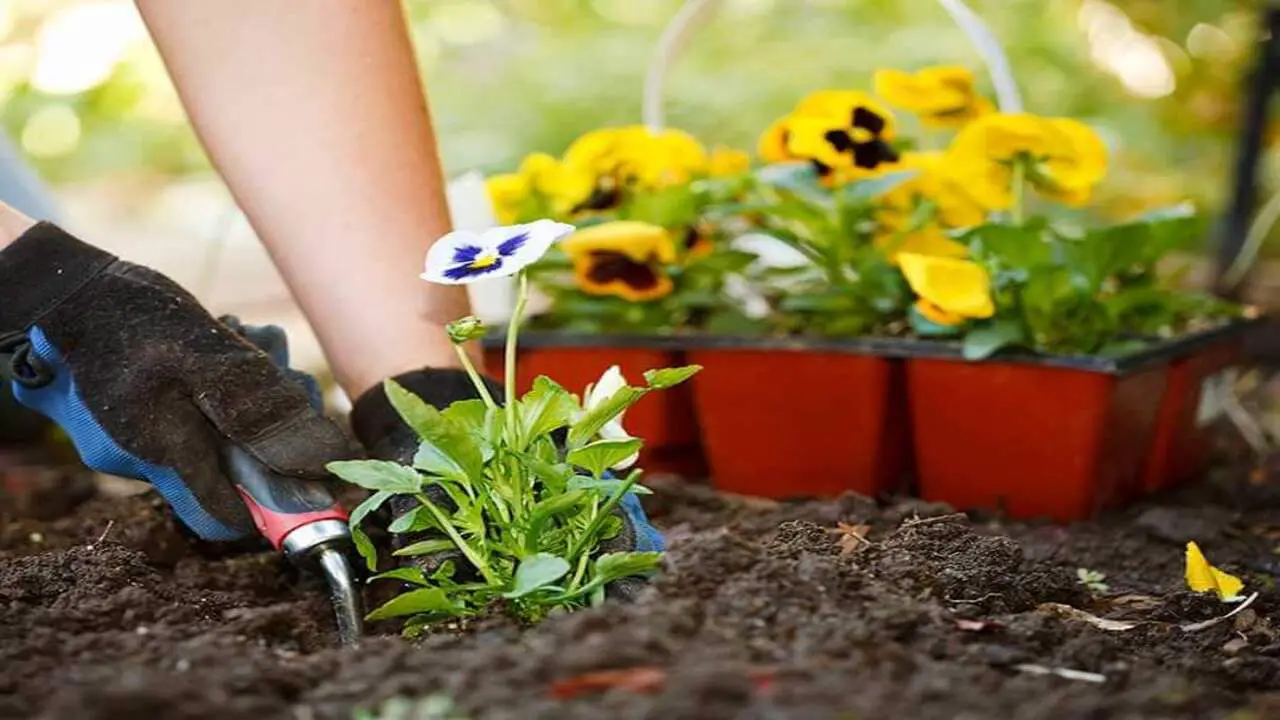
Proper soil preparation is essential for the health and success of your pansies. Pansies thrive in well-draining soil that is rich in organic matter. Before planting, it is important to prepare the soil by removing any weeds or debris and loosening it with a garden fork or tiller.
Adding compost or aged manure can help improve the soil’s fertility and moisture retention. It is also beneficial to test the soil’s pH level, as pansies prefer a slightly acidic to neutral pH range of 5.5 to 7.0. If needed, you can adjust the pH by adding lime to raise it or sulfur to lower it.
By taking the time to prepare your soil properly, you can provide your pansies with a healthy foundation for growth and ensure they thrive throughout the growing season.
Planting Pansies
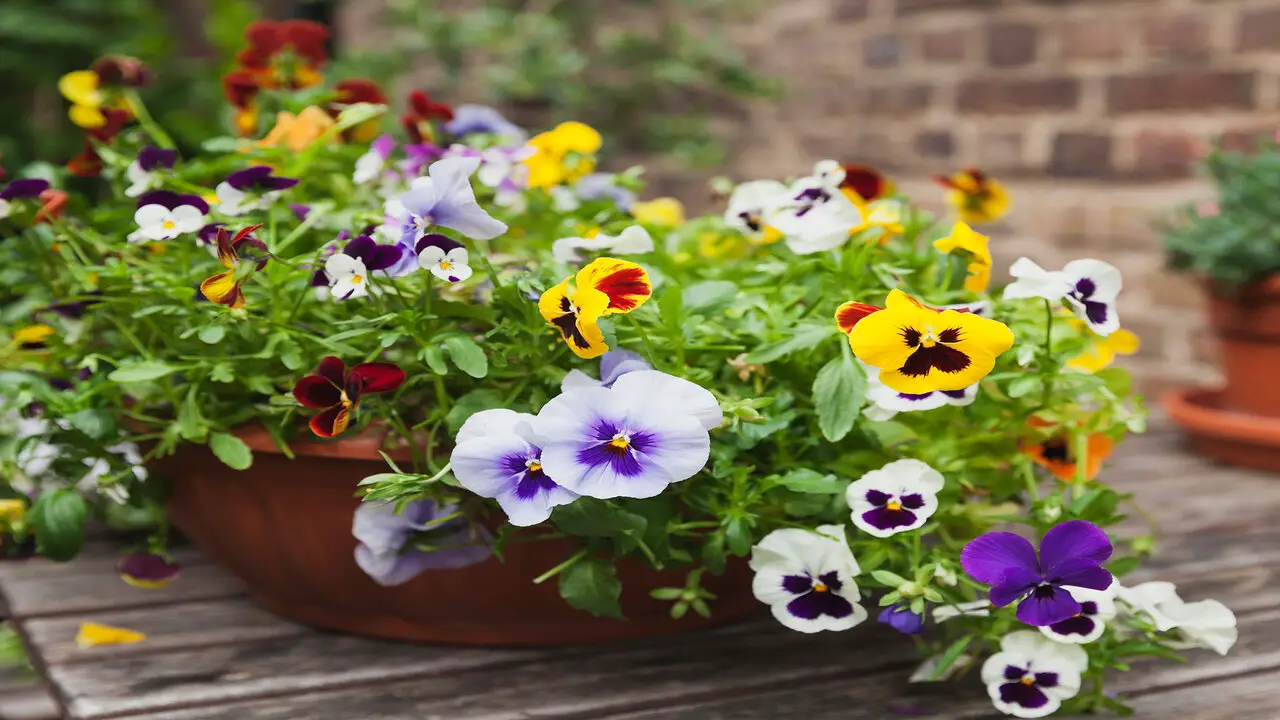
Planting pansies is a simple and rewarding process. n By following these steps, you can ensure your pansies thrive and provide vibrant color throughout the season. Here are some steps to help you care for your pansies:
- Choose The Right Location: Pansies prefer full sun or partial shade, so select a spot in your garden that receives at least 4-6 hours of sunlight per day.
- Prepare The Soil: Pansies thrive in well-draining soil, so make sure to amend the soil with organic matter such as compost or peat moss to improve drainage.
- Planting: Dig holes that are slightly larger than the root ball of your pansies. Place the plants in the holes, making sure they are level with the surrounding soil. Space them about 6-8 inches apart to allow for proper air circulation.
- Watering: After planting, water your pansies thoroughly to settle the soil and encourage root growth. Keep the soil evenly moist, but avoid overwatering as this can lead to root rot.
- Mulching: Apply a layer of mulch around your pansies to help conserve moisture and suppress weed growth. Avoid placing mulch directly against the stems of the plants, as this can cause rotting.
- Fertilizing: Feed your pansies with a balanced fertilizer every 4-6 weeks during the growing season to promote healthy growth and abundant blooms.
- Deadheading: Regularly remove faded flowers from your pansies to encourage continuous blooming and prevent seed production.
Watering Pansies
Proper watering is essential for the health and longevity of pansies. Pansies prefer to be kept evenly moist but not overly saturated. It is important to water them regularly, especially during dry periods or hot weather.
When watering, aim to moisten the soil thoroughly without allowing water to pool on the surface or become stagnant. This can be achieved by watering at the base of the plants rather than overhead, as it helps prevent disease and fungal issues.
Additionally, using a mulch around the base of the plants can help retain moisture in the soil and reduce evaporation. By providing consistent and adequate moisture, you can ensure that your pansies thrive and continue to produce beautiful blooms throughout the season.
Fertilizing Pansies
Fertilizing pansies is an important part of caring for these beautiful flowers. Pansies are heavy feeders and require regular fertilization to thrive and produce abundant blooms. When it comes to choosing a fertilizer for pansies, opt for a balanced formula that contains equal amounts of nitrogen, phosphorus, and potassium.
This will provide the necessary nutrients for healthy growth and vibrant flowers. It’s best to fertilize pansies every 2-3 weeks throughout the growing season, starting in early spring and continuing until late fall.
Be sure to follow the instructions on the fertilizer packaging for proper application rates and techniques. By giving your pansies the nutrients they need, you can enjoy a colorful and stunning display of flowers all season long.
Pruning And Deadheading Pansies
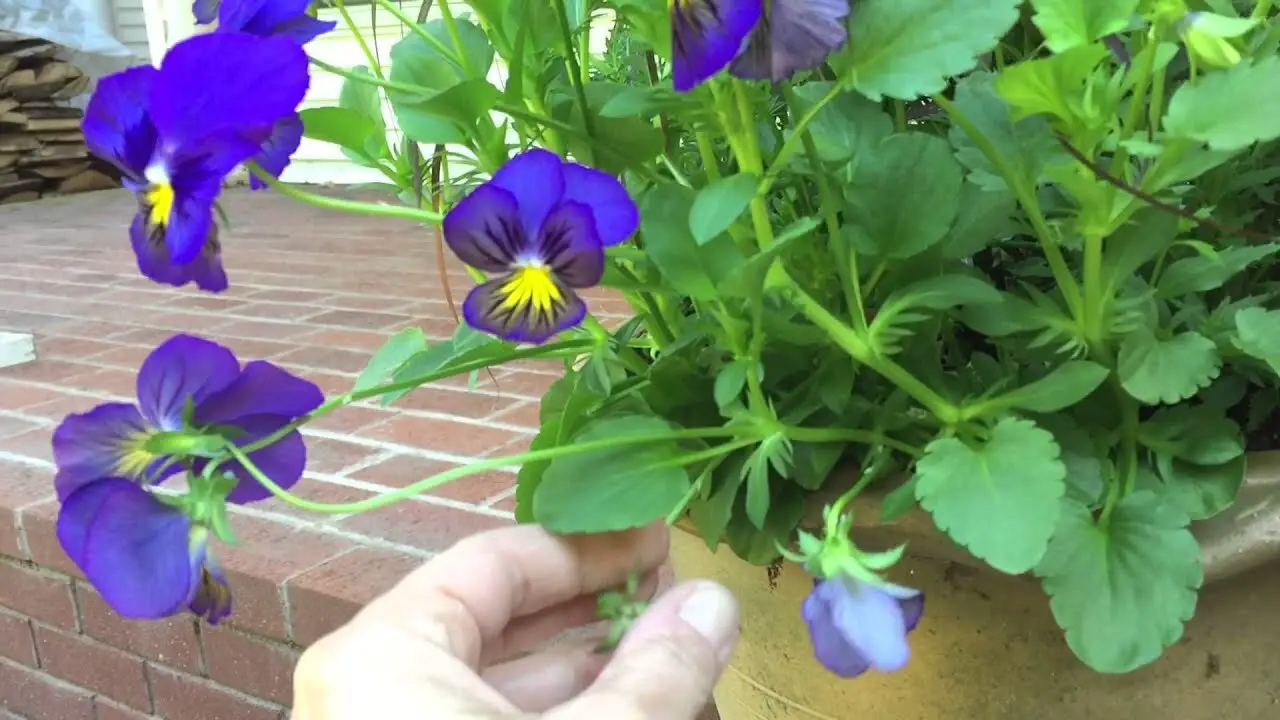
Pruning and deadheading pansies are important tasks in caring for these beautiful flowers. Also, pruning involves removing any damaged or wilted leaves, stems, or flowers from the plant. This not only improves the overall appearance of the pansies but also promotes healthy growth by allowing more nutrients and sunlight to reach the remaining foliage.
Deadheading, on the other hand, involves removing spent flowers from the plant. By doing this regularly, you can encourage continuous blooming throughout the growing season. It also prevents the pansies from using their energy to produce seeds, redirecting it toward producing new blooms instead.
To prune and deadhead your pansies, simply use a pair of clean and sharp garden scissors or shears to cut back any unwanted parts of the plant. Be sure to clean your tools in between cuts to prevent the spread of diseases.
Pest And Disease Management For Pansies

Pansies are beautiful and delicate flowers that can add a touch of color to any garden. However, like all plants, they are susceptible to pests and diseases. Proper pest and disease management is crucial to ensure the health and longevity of your pansies. Here are some tips to help you effectively manage pests and diseases:
- Identify Common Pests: Some common pests that can affect pansies include aphids, slugs, snails, and spider mites. Learn how to identify these pests so you can take appropriate action if you spot them on your plants.
- Keep Your Garden Clean: Remove any dead leaves or plant debris from your garden bed regularly. This will help prevent the buildup of pests and diseases.
- Use Organic Pest Control Methods: Consider using organic pest control methods, such as insecticidal soaps or neem oil, to treat infestations. These options are less harmful to beneficial insects and the environment.
- Provide Proper Watering: Pansies prefer moist soil but can be susceptible to root rot if overwatered. Water your pansies at the base of the plant in the morning to allow excess moisture to evaporate during the day.
- Monitor For Signs Of Disease: Keep an eye out for signs of common pansy diseases such as powdery mildew, leaf spot, or crown rot. If you notice any symptoms, promptly remove affected leaves or plants to prevent further spread.
By following these tips, you can effectively manage pests and diseases in your pansy garden and ensure that your flowers thrive throughout the season.
Extending The Blooming Season Of Pansies
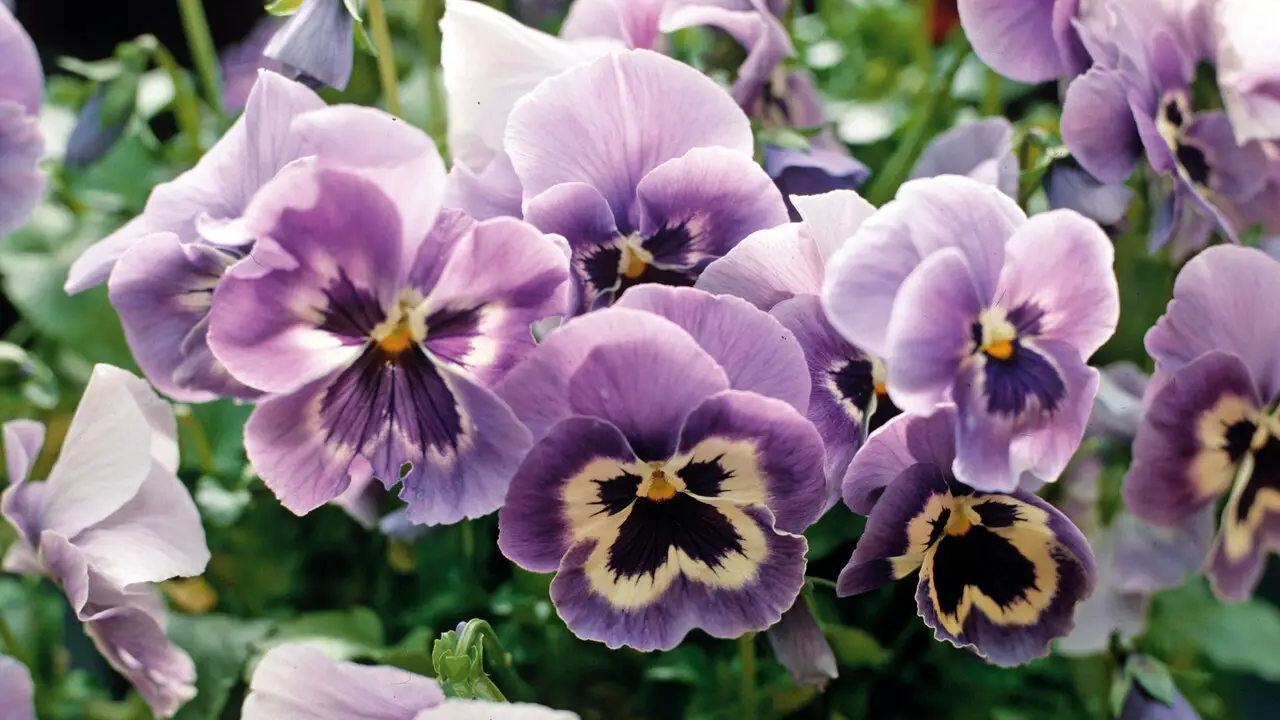
Extending the blooming season of pansies can be achieved with some simple care techniques. One way to prolong their blooming period is by deadheading, which involves removing faded flowers. This encourages the plant to produce new blooms and prevents the energy from being wasted on seed production.
Additionally, regular watering is crucial for pansies, especially during hot weather. They prefer moist soil but should not be overwatered, as this can lead to root rot. Applying a layer of mulch around the base of the plants can help retain moisture and regulate soil temperature.
Finally, fertilizing pansies with a balanced fertilizer every few weeks can provide them with the necessary nutrients for continuous growth and flowering. By following these care tips, you can enjoy beautiful pansy blooms for an extended time.
Overwintering Pansies
Overwintering pansies is an important step in caring for these delicate flowers. Pansies are known for their ability to withstand colder temperatures, but they still require some protection during the winter months. One way to overwinter pansies is by mulching around the plants with a layer of straw or compost.
This will help insulate the soil and protect the roots from freezing temperatures. Additionally, you can cover the plants with a frost cloth or use a cold frame to provide extra protection from harsh weather conditions. It is also important to water pansies sparingly during the winter months, as overwatering can lead to root rot. By following these steps, you can ensure that your pansies survive the winter and continue to bloom beautifully in the spring.
Tips For A Successful Pansy Garden
Caring for pansies can be a rewarding and enjoyable experience. By following these tips, you can create a beautiful and thriving pansy garden that will bring color and joy to your outdoor space. Here are some tips to help you create a successful pansy garden:
- Choose The Right Location: Pansies prefer full sun or partial shade, so choose a spot in your garden that receives at least six hours of sunlight per day.
- Prepare The Soil: Pansies thrive in well-draining soil that is rich in organic matter. Before planting, amend the soil with compost or aged manure to improve its fertility and drainage.
- Water Regularly: Pansies have shallow root systems and require regular watering to keep the soil evenly moist. Water deeply when the top inch of soil feels dry, but be careful not to overwater as this can lead to root rot.
- Fertilize Regularly: Feed your pansies with a balanced fertilizer every four to six weeks to promote healthy growth and abundant blooms. Use a slow-release granular fertilizer or liquid fertilizer according to package instructions.
- Deadhead Spent Blooms: Remove faded flowers regularly to encourage continuous blooming and prevent seed production. This will help redirect energy into new growth and more vibrant flowers.
- Watch For Pests And Diseases: Keep an eye out for common pansy pests such as aphids, slugs, and snails. Treat any infestations promptly with organic pest control methods or insecticidal soap. Also, be aware of common diseases like powdery mildew or crown rot, and take preventive measures such as proper spacing and good airflow.
Troubleshooting Common Issues
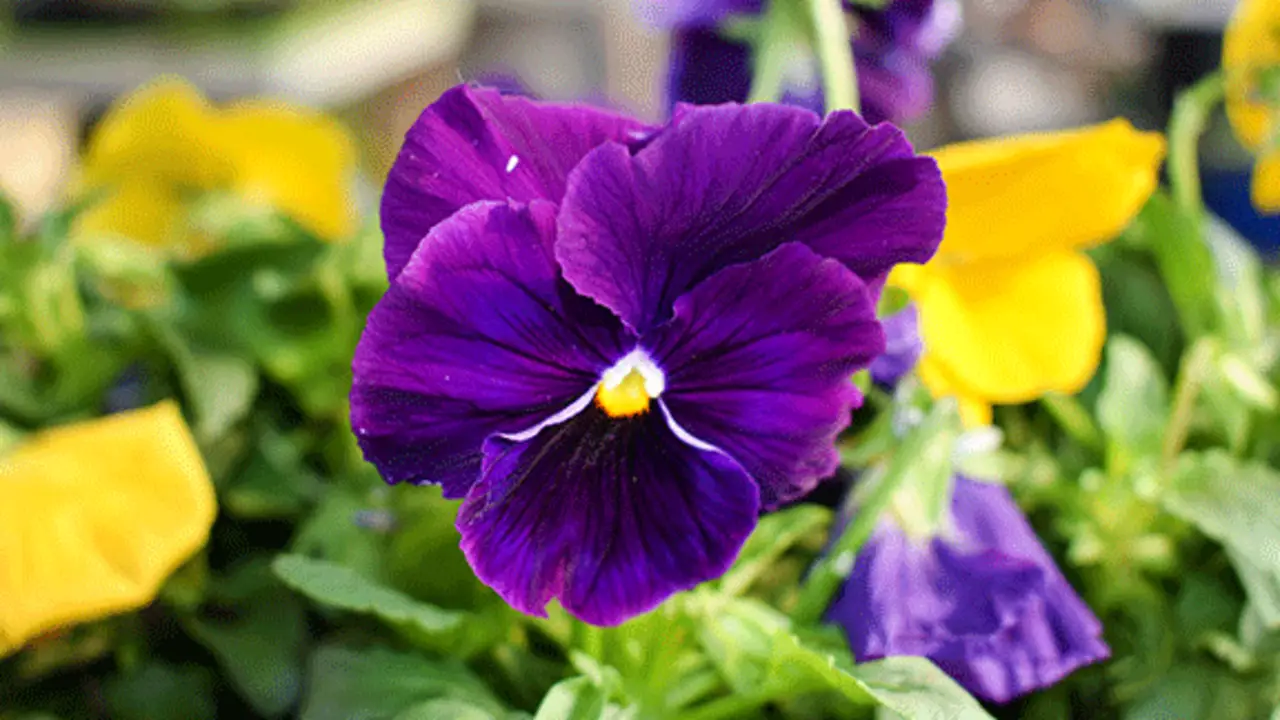
Caring for pansies can be a rewarding experience, but like any plant, they can encounter some common issues. You can ensure that your pansies stay healthy and vibrant throughout the season by being attentive to these common issues and taking appropriate action. Here are a few troubleshooting tips to help you keep your pansies healthy and thriving:
- Yellowing Leaves: If you notice yellowing leaves on your pansies, it could be a sign of overwatering or poor drainage. Make sure to water your pansies only when the top inch of soil feels dry, and ensure that your pots or flower beds have adequate drainage.
- Wilting Plants: Wilting can be a sign of underwatering or heat stress. Pansies prefer moist soil, so make sure to water them regularly during dry periods. If your pansies are in direct sunlight, consider providing them with some shade during the hottest part of the day.
- Powdery Mildew: Powdery mildew is a fungal disease that can affect pansies. It appears as a white powdery substance on the leaves and stems. To prevent powdery mildew, make sure to provide good air circulation around your plants and avoid overhead watering. If you notice signs of powdery mildew, remove affected leaves and treat them with a fungicide if necessary.
Creative Uses For Pansies In Landscaping
Pansies are not only beautiful flowers, but they also have many creative uses in landscaping. One popular way to incorporate pansies into your landscape is by planting them in flower beds or borders. Their vibrant colors and delicate petals can add a pop of color and visual interest to any garden.
Pansies can also be used to create eye-catching patterns or designs when planted in groups or arranged in containers. Another creative use for pansies is as ground cover. Their low-growing habit and dense foliage make them an excellent choice for filling in gaps between larger plants or covering bare patches of soil.
Additionally, pansies can be used to create stunning hanging baskets or window boxes, adding beauty and charm to any outdoor space. With their versatility and beauty, pansies are a must-have for any gardener looking to add some flair to their landscape design.
Conclusion
To ensure the health and beauty of your pansies, follow these care tips. Choose a location with full sunlight or partial shade, prepare the soil by adding organic matter, plant the pansies at the right depth, and water them regularly, keeping the soil moist but not waterlogged.
Fertilize the plants every few weeks to promote healthy growth and blooming. Deadhead the faded flowers to encourage continuous blooming. Be vigilant against pests and diseases, and take appropriate measures for prevention and management.
Consider extending the blooming season by providing some protection during harsh weather conditions. And finally, get creative with your pansies by using them in various landscaping designs. Your pansy garden will be a colorful and delightful sight with proper care. We hope you understand how to care for pansies.
Frequently Asked Questions
1.How Do You Take Care Of Potted Pansies?
Ans: To properly care for potted pansies, it is important to use well-draining soil and water them regularly. Make sure the pot has drainage holes and avoid overwatering or letting the soil dry out completely. Regularly deadhead spent blooms for new growth, and fertilize every 2-3 weeks with a balanced fertilizer.
2.How Do You Keep Pansies Looking Good?
Ans: To keep pansies looking their best, ensure the soil is consistently moist without being waterlogged. Regularly deadhead the flowers to promote continuous blooming. Fertilize every two weeks with a balanced fertilizer. When planting, choose a location that receives full sun to partial shade.
3.Do Pansies Need To Be Deadheaded?
Ans: Regular deadheading is essential for pansies to encourage continuous blooming. It involves removing faded flowers before they go to seed, either by pinching off the stem or using scissors. Deadheading not only promotes more blooms but also helps prevent disease and keeps the plants looking neat.
4.Do Pansies Like Sun Or Shade?
Ans: Pansies prefer partial shade and cool weather. Too much sun can cause their blooms to wilt or fade quickly. Morning sun and afternoon shade are ideal for pansies. In hot climates, they may require more shade or frequent watering.
5.How Long Can Pansies Live?
Ans: Pansies have a lifespan of up to two years if properly cared for. These cool weather-loving flowers thrive in moist, well-draining soil. Regular deadheading can help prolong their blooming period. However, extreme heat or cold may be detrimental to their survival, so protecting them during harsh weather conditions is important.






